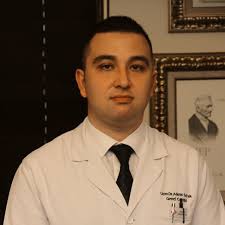
Assessment of long-term outcomes of pediatric liver transplant recipients
Ozan Okyay1, Emre Karakaya1, Adem Safak1, Sedat Yildirim1, Figen Ozcay2, Nedim Cekmen3, Mehmet Haberal1.
1Department of General Surgery, Division of Transplantation, Baskent University, Ankara, Turkey; 2Department of Pediatric Gastroenterology, Baskent University, Ankara, Turkey; 3Department of Anaesthiology and Reanimation, Baskent University, Ankara, Turkey
Introduction: In children with end-stage liver disease, acute liver failure and some of metabolic disease liver transplant (LT) is the most effective and only curative treatment. Although the intraoperative and postoperative period is more challenging compared to adult liver transplants, as a result of advances in surgical techniques and immunosuppression therapies, the 10-year survival rate in recipients after LT is now more than 75%. In this study we aimed to evaluate the long-term outcomes of pediatric LT recipients in our center.
Methods: From November 8, 1988, to April 3, 2025, we performed 776 LT procedures and 377 of them were pediatric. On March 15, 1990, Dr. Haberal performed partial LT in children, a first in Turkey, Europe and the region. We reviewed the medical records of recipients for the primary cause of liver failure, age, weight at the time of transplantation, type of graft, medical outcomes of the recipients.
Results: Of these 377 pediatric liver transplant recipients, 195 were male and 182 were female. Mean age of 7.44 years (3 months – 17 years). All living related LT donors were up to fourth degree relatives with their recipients. We performed 39 pediatric LT from deceased donors. Most cause of liver failure was biliary atresia (n=85). Other common etiologies were metabolic diseases and progressive familial intrahepatic cholestasis. Mean weight of recipients was 23.1 kg (4-81 kg). Most of graft types was left lateral graft (n=218). Most of the post-transplant complications was biliary leakege (n=67). The overall 5- and 10-year survival rates were 83% and 79% respectively.
Conclusion: Pediatric liver transplantation is a complex and high-risk procedure, but it is crucial for improving the survival and quality of life for children with end-stage liver disease. Successful transplantation not only restores liver function but also offers hope for long-term health and development. While challenges remain, continued advancements in surgical techniques, immunosuppressive therapies, and post-transplant care are key to enhancing outcomes. A focused, multidisciplinary approach is essential to optimize patient care and ensure the best possible results for pediatric liver transplant recipients.